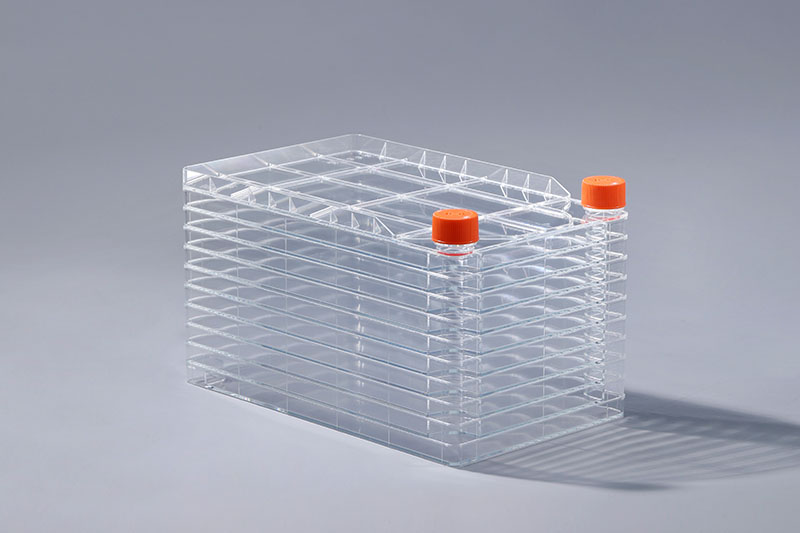세포 배양 기술의 발전은 지금까지 매우 성숙했으며 단클론 항체의 제조, 백신 생산, 과학 연구 및 기타 분야에서 널리 사용되었습니다. 세포 배양에는 세포 소모품의 도움이 필요합니다. 시장에는 다양한 유형의 소모품이 있습니다. 그 중 cell factory은 일종의 소모품으로 특수한 구조를 가지고 있습니다.
다른 병형 소모품과 달리 Cell Factory는 다층 구조의 특수 소모품입니다. 일반적인 사양에는 1층, 2층, 5층, 10층, 40층 등이 있습니다. 세포를 배양할 때 배지를 내부 층에 붓고 세포를 바닥에 부착하여 성장 및 증식합니다. 10단, 40단의 레이어 수가 많아 매체 투입 후 작동이 어렵습니다. 일반적으로 자동화된 셰이커와 함께 사용됩니다. 대규모 세포 배양의 프로그래밍, 자동화 및 효율성을 실현할 수 있으므로 노동 집약도와 밀도를 크게 줄일 수 있습니다. 오염 위험을 줄입니다. 배양면적을 기준으로 하면 10층 세포공장의 배양면적은 T-175 세포 배양 플라스크 36개와 맞먹는다. 층은 특수 용접 공정으로 연결되어 내부 환경의 안정성을 보장하고 세포 성장을 위한 좋은 성장 환경을 만들 수 있습니다.
현재 세포 공장은 일부 전통적인 세포 배양 소모품을 점차적으로 대체하여 주류 소모품이 되었습니다. 바이오 제약 및 과학 연구 분야. 바이오 의약품 산업의 급속한 발전과 함께 이 소모품의 미래 성장 공간은 기대할 가치가 있습니다.
At present, cell factories have gradually replaced some traditional cell culture consumables and become mainstream consumables in the fields of biopharmaceuticals and scientific research. With the rapid development of the biopharmaceutical industry, the future growth space of this consumable is worth looking forward to.
The FAI climbed 5.9 percent year-on-year in the first 11 months of 2018, quickening from the 5.7-percent growth in Jan-Oct, the National Bureau of Statistics (NBS) said Friday in an online statement.
The key indicator of investment, dubbed a major growth driver, hit the bottom in August and has since started to rebound steadily.
In the face of emerging economic challenges home and abroad, China has stepped up efforts to stabilize investment, in particular rolling out measures to motivate private investors and channel funds into infrastructure.
Friday's data showed private investment, accounting for more than 60 percent of the total FAI, expanded by a brisk 8.7 percent.
NBS spokesperson Mao Shengyong said funds into weak economic links registered rapid increases as investment in environmental protection and agriculture jumped 42 percent and 12.5 percent respectively, much faster than the average.
In breakdown, investment in high-tech and equipment manufacturing remained vigorous with 16.1-percent and 11.6-percent increases respectively in the first 11 months. Infrastructure investment gained 3.7 percent, staying flat. Investment in property development rose 9.7 percent, also unchanged.
 English
English



















































